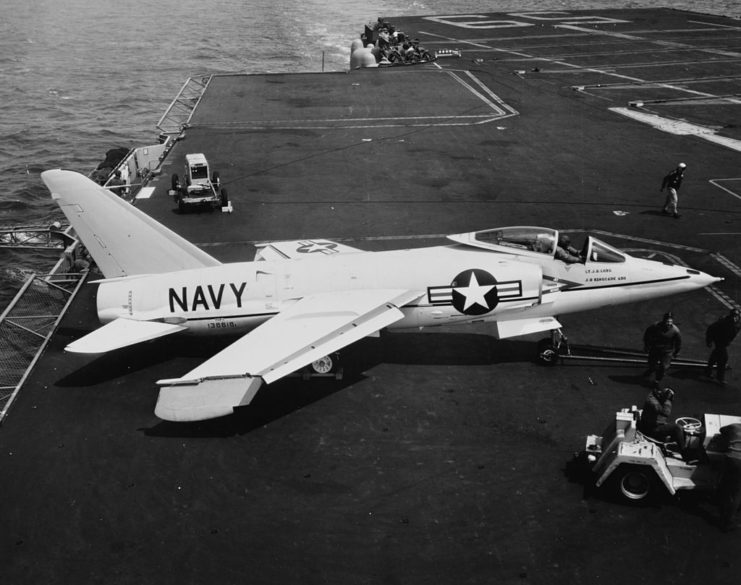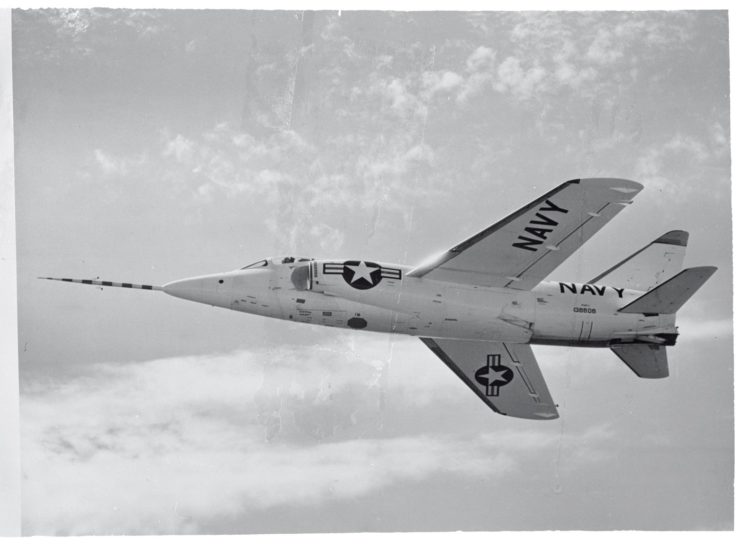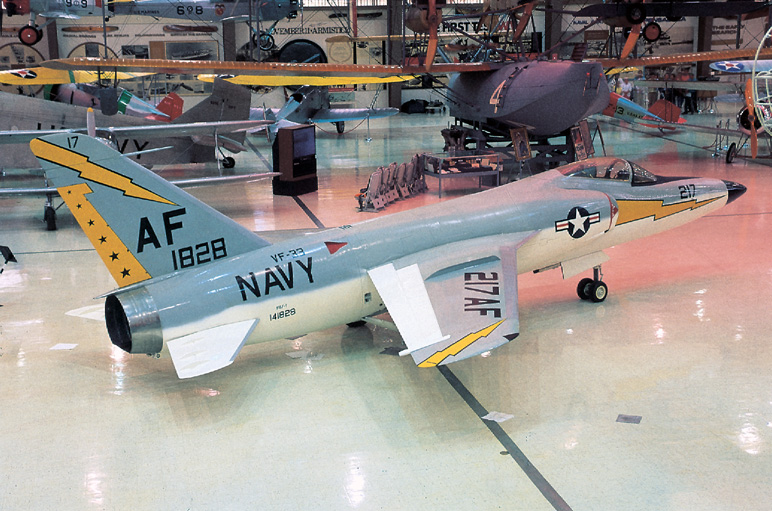The Grumman F-11 Tiger was an interesting fighter from an era that saw rapid and continuous advances in aircraft design. It was the US Navy’s second supersonic aircraft and proved to be a perfectly capable aircraft. The Tiger only remained in frontline service for four years before it was retired, but it spent some time with the Blue Angels. It holds the rather comical title of being the first jet aircraft to shoot itself down with its own guns.
The F-11 started out in 1952 as a simple upgrade and modernization of Grumman’s existing F-9 Cougar carrier-based fighter. However, at this point in time jet aircraft were still relatively young and were developing at a lightning-fast pace, so by the time this aircraft was ready to fly it was almost an entirely new design.
The F-11 Tiger

The aircraft, which would eventually become the F-11 Tiger, incorporated new design choices like the area rule which gave it good performance at supersonic speeds. The Tiger utilized full-span leading-edge slats which improved its lift at low speeds, ideal for carrier aircraft that need to take-off and land in short distances.
Spoilers controlled the aircraft’s roll instead of more conventional ailerons. A cylindrical fuselage and wings swept back by 35 degrees gave it good high-speed performance.
As the Tiger would operate from carriers, its wings could be folded down to reduce the amount of space it takes up on board.
Power came from a Wright J65 turbojet engine. This axial-flow engine was actually a license-built version of the British Armstrong Siddeley Sapphire that powered famous British aircraft such as the Hawker Hunter and Handley Page Victor. It was even used on English Electric Lightning prototypes.
The Americans used their J65 on a number of designs too, including the Martin B-57 Canberra and Douglas A-4 Skyhawk.
The US Navy was interested in the F-11 Tiger as it had good supersonic potential and could operate from a carrier. They ordered two prototypes, named the XF9F-8, despite being a total departure from the F-9 Cougar.
The situation became even more confusing when it was renamed the XF9F-9, with a variant of the Cougar being given the name XF9F-8.
For testing, the airframe was ready before the afterburning J65 engine, so the prototype first flew in 1954 with a non-afterburning engine instead. Even with this limitation, the Tiger very nearly broke the sound barrier on its first-ever flight. When the J65 was eventually fitted, the Tiger became the second Navy aircraft to fly faster than the speed of sound.
Soon after the Tiger was accepted into service with the US Navy.
The jet that shot itself down
In 1956 the Tiger was involved in a rather unusual incident during live-firing tests. Pilot Tom Attridge fired the Tiger’s 20 mm cannons while the aircraft was in a slight dive. As the rounds’ energy depleted and they began to fall to earth, they coincided with the flight path of Attridge. The rounds damaged the aircraft and caused Attridge to crash land. Luckily he survived. Since then, similar incidents have occurred, with an F-14 Tomcat even shooting itself down with its own missile.
Fate
Entering service in 1956, the Tiger was immediately hampered by short-range and reliability issues, mostly related to its J65 engine. It served for just four years, with the Navy removing it from carrier duties in 1961 and canceling orders. Only 200 were built.
The Vought F-8 Crusader did not help matters, as it outperformed the Tiger in almost every way. Despite being removed from frontline roles, the Tiger carried on in use mainly as a supersonic training aircraft. In addition, the Blue Angels used the Tiger until 1968, at which point they switched to the F-4 Phantom.
Grumman attempted to address its performance shortcomings with a beefed-up version called the Super Tiger.
The Super Tiger

The F11F-1F Super Tiger was Grumman’s attempt at fitting the aircraft with the new (and immensely powerful) General Electric J-79 turbojet engine. This engine nearly doubled the thrust output of the J65 and was the engine of choice for the F-4 Phantom.
When Grumman put the engine in a modified F-11 airframe, it exceeded even their own expectations. On a 1957 test flight, a Super Tiger reached an incredible 1,400 mph at 40,000 ft, making it the Navy’s first aircraft to reach Mach 2.
The following year the Super Tiger set a world altitude record of 76,939 feet. Although the aircraft was extremely capable the Navy never ordered it into production. Grumman’s efforts to sell the aircraft to the US and on export markets were allegedly hampered by a Lockheed bribery scandal.
